What is Taylorism and how did it influence project management ?
Taylorism
Taylorism is named after a 19th Century management guru known as Frederick Winslow Taylor.
He conducted a ‘time and motion’ study for many of the big manufacturing concerns of the late 1890s to early 1900s, and the focus of the study was to understand how organizations could be more efficient and productive.
How do we deliver more products within shorter time frames.
He is the father of modern business management, and by extension, waterfall-style project management because he is the person who identified that there should be a best practice that is followed to achieve X outcome, and that supervisors should instruct workers how to do that.
In essence, managers are the brains of the operation, supervisors ensure work is done according to how it must be done, and workers are the commodities that execute against a predetermined plan.
In a simple or complicated environment, we are repeating the same tasks over and over so you can identify a best practice and create a process of system of delivery that ensures a specific outcome.
So, his work and thought leadership in the space became incredibly popular and informed pretty much everything that evolved from there. It is only when we entered the complex space that this framework or approach to product development proved unreliable and created more problems than it solved.
Context for Taylorism
In Taylor’s world, outcomes were guaranteed.
If you built clocks, you were guaranteed a clock at the end of the manufacturing process. If the organization had great systems and processes, you would have great quality clocks being delivered frequently and efficiently because you understood how best to build great quality clocks.
At the time of the industrial revolution, demand far exceeded supply.
So, we had sparse markets with very little in the way of competitors, and from a consumer demand perspective, people had very little in the way of choice and had to line up for whatever products and services were available at the time.
The ideal situation for a manufacturing company, and a tough position to be in as a consumer.
If you weren’t impressed with waiting for a clock, it didn’t matter, there were thousands of people lining up behind you to buy one as soon as it was available.
Globalization
If you manufactured clocks in London, you probably only served a market within London. Bigger manufacturers might have served England, and a very rare few organizations would serve a market that included the United Kingdom and parts of Europe.
Much of the work was localized and not subject to the challenges of globalization.
Supply chains. Dynamic markets. Disruptive competitors.
A great example of this power imbalance between manufacturers and consumers is the well-known quote from Henry Ford, “Any customer can have a car painted any colour that he wants, as long as it is black.”
Frederick Winslow Taylor developed his recommended practices, behaviours, and techniques based on the business context of those times, and it never really evolved from that base recommendation for the next 100 years.
Command and Control.
In a manufacturing plant, the work is monotonous and single minded. A worker pulls this lever or presses that button, a thousand times a day, and so they are bored and frustrated. In many ways, they will try find ways not to do the work because it is soul destroying.
That’s why you need supervisors.
To crack the whip and ensure that people are fired if they don’t do the work, and rewarded with a minimal salary if they do the work correctly. Managers set the direction for the team and support the supervisors in enforcing the tasks.
The primary traits of a great employee are compliance, diligence, and obedience.
Even today, many large organizations still embrace Taylorism and create their systems and processes based on the idea that senior managers and leaders are the top of the work food chain, and the people who perform the work are commodities that could be replaced without effort or cost.
Project Management
The outcome of Taylorism is that organizations replicated the military with a hierarchy of command and control. The senior managers and business leaders set the strategy, decided on how products or projects would be funded, and then hired a consultant to tell them what the best practice for developing that product or service would be.
That instruction then flowed down the hierarchy and workers did as they were told, when they were told, and provided with predetermined cost and time constraints to complete the work.
If you can’t do the work within these deadlines, and within that budget, we will replace you with someone who can. If you can, and you do it before the deadline and for cheaper than we planned, you will be rewarded with a supervisory or management role.
Over time, measures and tools were developed to track the work and provide project managers and senior managers with insight into how the project was progressing, and what they could reliably anticipate at predefined milestones on the project timeline.
Things like Gantt Charts, developed by Henry Gantt in 1906, and later project management processes like PMI and Prince, followed by the introduction of project management software.
In the 1950s, the US Military Industrial complex took a firm grasp on many of the elements of Taylorism and deeply embedded these processes and practices in their environments. The success of this approach led to greater adoption of Taylorism throughout the world, and the formalization of project management as a profession and structured industry in the 1960s.
So, there have been some evolutions, especially from a technology perspective, but not much in the way of divergence from a command-and-control culture of management and project management.
You group people by ability and traits that align with command-and-control strategies.
You standardise the processes and systems within the environment.
You standardise the tools that are necessary to do the work.
You train people to perform simple, repeatable tasks in a specific way.
You hire professionals to execute the complicated work in an efficient, repeatable way.
You focus on efficiency and cost reduction at every step of the supply chain.
You seek to automate tasks where possible and reduce the need for human intervention.
You divide the business into silos based on function, such as marketing, sales, logistics.
And so forth.
Separate departments and train them exclusively in those ability-based functions.
As you cut costs and remove the need for human intervention, productivity increases as does profitability and predictability.
Over the past twenty years, more organizations have made an attempt to place a greater emphasis on people and a more humane way of developing products and services, but those efforts are often thwarted when people come up against bureaucracy and organizational policies that stifle creativity.
The Agile movement, created in 2001, was a recognition that the ‘old way of working’ no longer worked in a complex environment. Was no longer effective when we needed to create a complex solution in the face of compelling, complex problems.
Because we had never solved the problem or build the solution before, there was no magic recipe to follow nor could we reliably predict outcomes based on current interventions. We needed to cocreate, collaborate, and experiment to discover the best solutions.
Managers possess the least amount of technical knowledge, skill, and capability to do the work, whilst workers possess the most knowledge, skill, and experience in solving problems and creating solutions, so something needs to change in how decisions are made and how projects are funded.
We need structures, processes, and frameworks to support that new way of working and we needed to develop tools, systems, and cultures to effectively solve the challenges associated with the 21st century.
So, in a nutshell, this is the rise and fall of Taylorism over the past 125 years. This is why traditional project management is designed the way it is, and why it needs to evolve if it is to be effective in complex environments moving forward.
In a simple world, like moving bricks from point A to point B, project management works a treat.
Sure, you could treat workers better and you could create a more fulfilling, rewarding, and financially secure environment for them, but ultimately, your focus is on getting the job done well and project management facilitates that perfectly.
In a complicated world, such as building bridges and other civil engineering, you need professionals who are deeply skilled and knowledgeable about the process of building bridges, but you also know the best way to build the bridge, how long it will take to build the bridge, and how much it will cost to build the bridge, so project management works a treat in this application too.
The chief engineer knows the most about building bridges well and cost effectively, and they become the driving force for informing, guiding, and showing others how to do the job well. A hierarchy works just fine, and as the work moves down the ladder, it becomes less complicated and more repeatable.
The chief engineer designs the systems and processes, the trained engineers execute against that plan and ensure that the people beneath them follow the plan to the letter, and those people ensure that the person who digs the trench digs it well and in alignment with the plan.
Everybody is reasonably happy. Everybody is reasonably productive. Everybody knows exactly what to do, how to do it, and when to do it.
So, traditional project management works well in this application too.
Conclusion
Taylorism played a critical role in helping the world advance. It played a critical role in helping companies achieve competitive advantage, and to build better, more cost-effective solutions for consumers. It did a great job when aligned with the correct application.
So, agile doesn’t knock project management, it simply acknowledges that it isn’t fit for complex environments and recommends a new approach. It also acknowledges where project management is a strength, and recommends that organizations stick with that approach for a simple or complicated application.
About NKD Agility
Naked Agility is an #agile consultancy that specializes in #scrumtraining, #agilecoaching and #agileconsulting to help teams evolve, integrate, and continuously improve.
We recognize the positive impact that a happy AND inspired workforce can have on customer experience, and we actively help organizations to tap into the power of creative, collaborative, and high-performing teams that is unique to #agile and # scrum environments.
If you are interested in #agiletraining, visit https://nkdagility.com/training/
If you have identified the need for #agilecoaching and #agileconsulting, visit https://nkdagility.com/agile-consulting-coaching/
We would love to work with you.
#scrum #agile #scrumteam #agileprojectmanagement #agileproductdevelopment #projectmanagement #productdevelopment #agilecoach #agileconsultant #agiletraining #scrumtraining #scrumorg



























